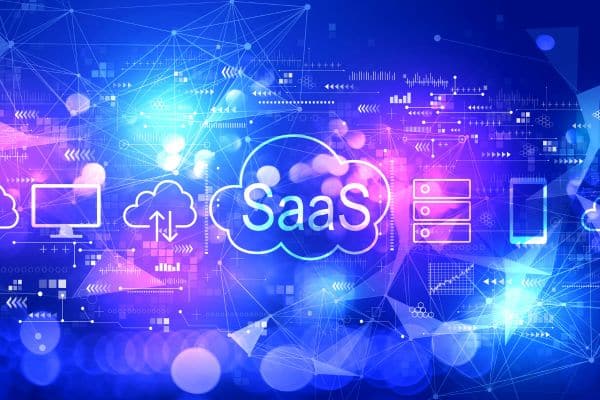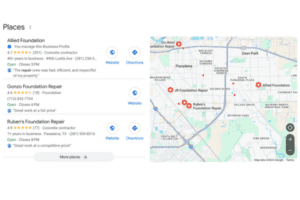As technology continues to evolve, so do the acronyms. The acronym “SaaS” has become a buzzword that’s difficult to ignore. Short for “Software as a Service,” SaaS represents a paradigm shift in how software is delivered, accessed, and utilized. This innovative approach has transformed the software industry, offering businesses and individuals a flexible, cost-effective, and scalable solution to their computing needs. In this blog post, we’ll check out the world of SaaS, exploring its definition, benefits, and impact on the digital realm.
Defining SaaS: Beyond Traditional Software
At its core, Software as a Service refers to a software distribution model where applications are hosted and maintained by a third-party provider, accessible to users over the internet. Unlike traditional software, which requires installation on individual devices and periodic updates, SaaS operates entirely in the cloud. This means that users can access the software and its features through a web browser without the need for downloads or installations.
Think of SaaS as a subscription-based model for software access. Instead of purchasing licenses or boxed copies, users pay a recurring fee to access the software, often on a monthly or annual basis. This model eliminates the upfront costs associated with traditional software, making high-quality applications more accessible to businesses of all sizes and individuals.
Benefits of SaaS: Empowering Businesses and Individuals
- Cost-Efficiency: One of the most significant advantages of SaaS is its cost-effectiveness. Businesses no longer need to invest heavily in software licenses, hardware, and maintenance. Instead, they can allocate resources to other critical areas while enjoying access to powerful software tools.
- Scalability: SaaS solutions are highly scalable, allowing businesses to adjust their usage and subscriptions based on their needs and wants. As the company grows or changes, it can easily scale up or down without the hassle of purchasing and installing new software.
- Accessibility: With SaaS, the geographical limitations of software are eliminated. Users can access their applications and data from anywhere with an internet connection, promoting remote work and collaboration.
- Automatic Updates and Maintenance: SaaS providers handle software updates and maintenance, ensuring that users always have access to the latest features and security patches without any additional effort on their part.
- Rapid Deployment: Traditional software deployment can be time-consuming and complex. SaaS solutions can be up and running within a fraction of the time, allowing businesses to quickly integrate new tools into their workflows.
- Enhanced Collaboration: Many SaaS applications are designed with collaboration in mind, facilitating real-time interaction and document sharing among team members, regardless of their physical locations.
- Reduced IT Burden: Since SaaS providers handle the technical aspects of software maintenance, businesses can offload much of the IT management burden, allowing their internal IT teams to focus on more strategic tasks.
Examples of SaaS Applications: Versatility and Diversity
SaaS has permeated various industries, offering a wide array of applications tailored to different needs. Some prominent examples include:
- Customer Relationship Management (CRM): Salesforce and HubSpot are well-known SaaS CRM solutions that help businesses manage their customer interactions, sales pipelines, and marketing efforts.
- Productivity and Collaboration: Microsoft 365 and Google Workspace provide cloud-based productivity tools like word processing, spreadsheets, email, and collaboration software.
- Human Resources Management (HRM): Workday and BambooHR offer SaaS solutions for human resources tasks such as payroll, employee records, and performance management.
- Project Management: Trello, Asana, and Monday.com are SaaS platforms that assist teams in planning, organizing, and tracking their projects.
- Enterprise Resource Planning (ERP): SAP and Oracle provide SaaS solutions that help businesses manage their resources, finances, and operations.
- Marketing Automation Platforms (MAP): Blitz Software Solutions and Fishing Charter Solutions have provided SaaS solutions for marketing tasks such as email marketing, websites, social media management, and SMS marketing.
As technology continues to evolve, so does the world of SaaS. The rise of artificial intelligence, machine learning, and big data has paved the way for even more sophisticated and specialized SaaS applications. We can expect to see further advancements in areas such as predictive analytics, personalized user experiences, and enhanced security measures.
In conclusion, Software as a Service (SaaS) has redefined the way we think about software delivery and consumption. Its subscription-based model, cost-efficiency, scalability, and accessibility have made it a transformative force in both business and personal computing. With a diverse range of applications catering to various needs, SaaS has become an integral part of the modern digital landscape. As technology marches forward, SaaS is poised to remain a powerful and adaptable solution, continually reshaping the software industry for years to come.















